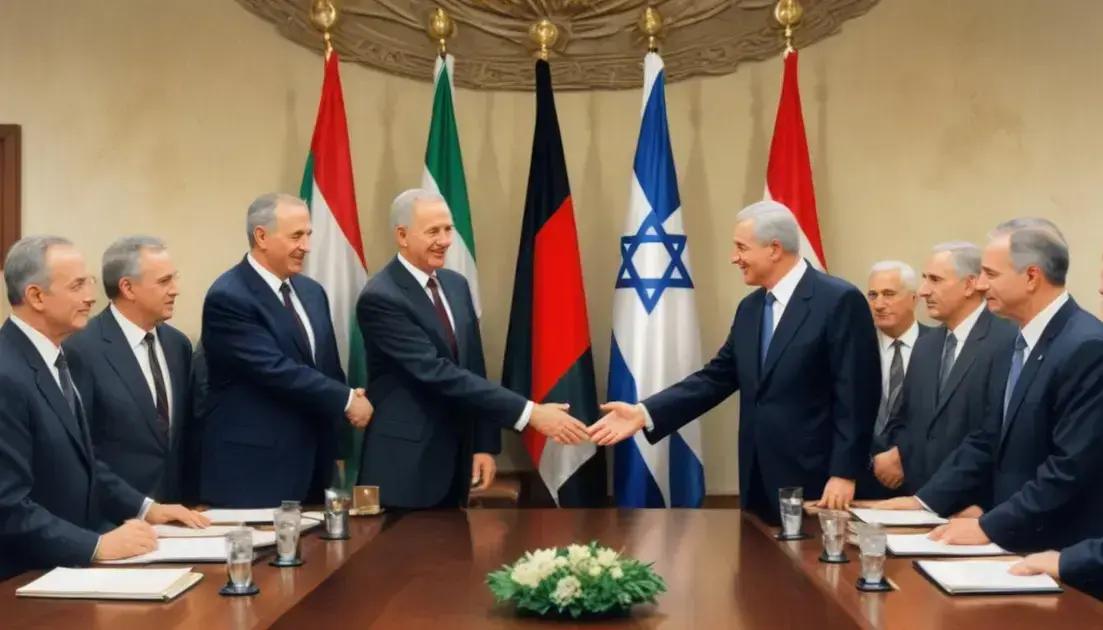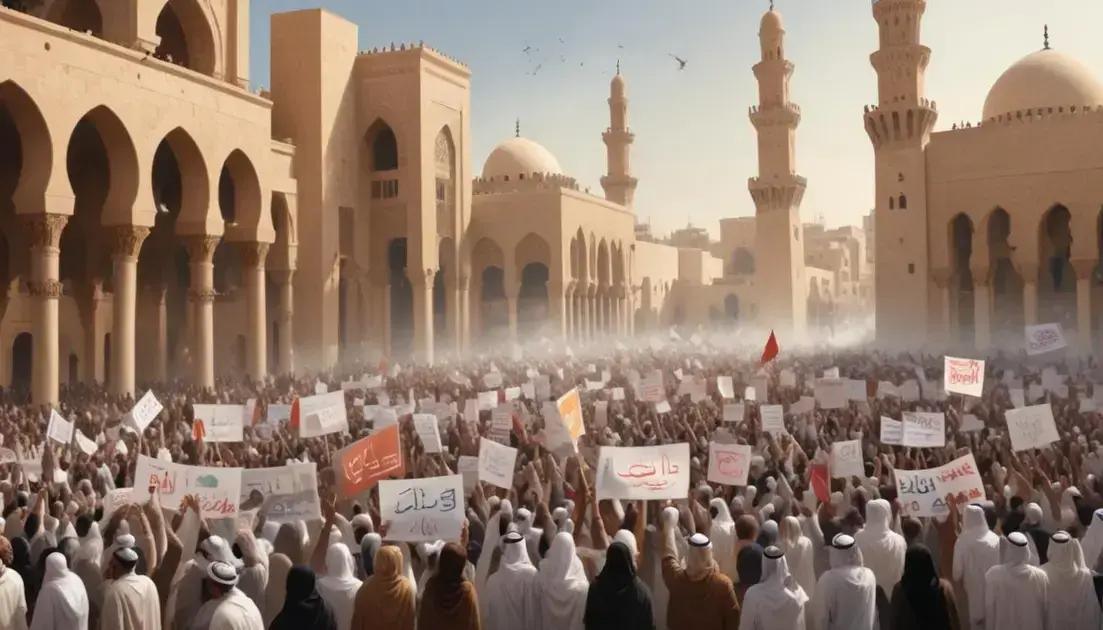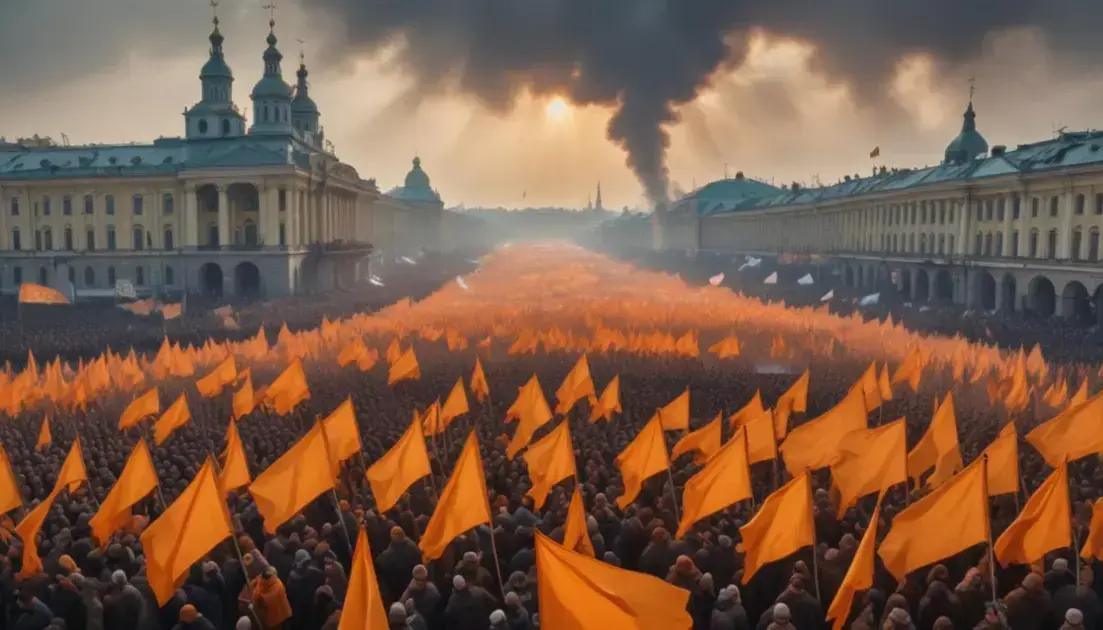
Oslo Accords: Hope for Peace Between Israel and Palestine
The Oslo Accords, signed in 1993, aimed to establish peace between Israel and Palestine by creating a framework for self-governance and recognition between both parties. Key figures like Yitzhak Rabin and Yasser Arafat were central to this effort, but many challenges, such as ongoing violence and unresolved issues, remain. Future prospects for peace depend on continued dialogue, cooperation, and international support, as both sides strive for a lasting resolution to the conflict.
The Oslo Accords marked a pivotal moment in the quest for peace between Israel and Palestine, igniting hopes and fears alike. Could this symbolize a new beginning?
Historical Context
The Oslo Accords are a key event in the history of Israel and Palestine. Signed in 1993, they aimed to end years of conflict. This agreement was the first major step toward peace between the two sides.
The background to this agreement is crucial. For decades, there had been tensions and violence. Many hoped that diplomatic efforts could change this cycle. The Accords brought together significant leaders from both sides.
President Yitzhak Rabin of Israel and Chairman Yasser Arafat of the Palestine Liberation Organization (PLO) played major roles in the negotiations. Their efforts highlighted the desire for mutual recognition and coexistence.
The Accords included promises for Palestinian self-governance in parts of the West Bank and Gaza Strip. This was a bold move toward peace and cooperation. However, many issues remained unresolved, leaving both sides with concerns.
Despite the optimism, challenges quickly surfaced. Differences in opinions and trust issues hindered progress. Violence and political tension continued, proving that achieving lasting peace is complicated.
Understanding this historical context helps us see why the Oslo Accords are significant. They remain a pivotal moment that many still discuss today.
Key Players
The Key Players in the Oslo Accords are vital to understanding the process. Two major figures stand out: Yitzhak Rabin and Yasser Arafat. Rabin was the Prime Minister of Israel, while Arafat led the Palestine Liberation Organization (PLO).
Yitzhak Rabin was known for his firm stance but also his willingness to negotiate. He believed in the possibility of peace with the Palestinians. His efforts played a significant role in shaping the Accords.
On the other hand, Yasser Arafat represented the Palestinian people. He aimed for self-determination and rights for Palestinians. Arafat’s participation showed a commitment to dialogue and finding common ground.
These leaders faced immense pressure. They had to convince their communities to support the agreements. Both leaders took significant risks to engage in talks. Their actions displayed the hope for a brighter future.
There were also other important figures during the negotiations. U.S. President Bill Clinton facilitated discussions, creating a platform for peace. His involvement highlighted the international community’s interest in the peace process.
The cooperation between these key players marked a turning point in history. Despite the challenges, their roles in the Oslo Accords opened new doors for dialogue.
Major Outcomes
The Major Outcomes of the Oslo Accords are important to understand. One key result was the establishment of the Palestinian Authority (PA). This gave Palestinians limited self-governance in certain areas.
Another significant outcome was the recognition between Israel and the PLO. This showed both sides were willing to acknowledge each other’s political rights. It was a big step toward potential peace.
The Accords also set up a framework for future negotiations. They included plans for resolving major issues like borders, refugees, and the status of Jerusalem. However, many of these key topics remained unresolved.
Despite hopes, the implementation faced challenges. Violence erupted soon after the signing. Some groups opposed the Accords and wanted to continue the conflict. This escalated tensions between both sides.
The Accords did create a new space for dialogue. They opened doors for future talks and other agreements. However, lasting peace has yet to be achieved. The Major Outcomes of the Oslo Accords continue to influence the Israeli-Palestinian conflict today.
Challenges Ahead
The Challenges Ahead after the Oslo Accords are significant. Even with the hope for peace, many issues remain in the Israeli-Palestinian conflict. Trust between both sides is fragile and often breaks down.
One big challenge is ongoing violence and conflict. After the Accords, there were several outbreaks of violence. Some groups still oppose any peace agreements and continue to fight.
Another issue is the lack of progress on key topics. Important matters such as borders, refugees, and Jerusalem’s status remain unresolved. These topics spark strong emotions on both sides.
Political divisions in both Israel and Palestine also complicate things. Leaders often face pressure from their communities to maintain tough stances. This can make negotiations harder and slow progress.
International involvement is another factor. Different countries have mixed opinions on how to support peace efforts. Some nations offer help, while others may influence tensions. Their roles can impact the peace process.
Despite these challenges, many hope for a resolution. Addressing these issues is crucial for a lasting peace in the region. Finding common ground might still be possible.
Future Prospects
The Future Prospects of the Oslo Accords are a topic of much discussion. Many people wonder if peace is still possible. There’s hope, but challenges remain. The desire for a peaceful resolution is strong among many.
Future talks could focus on important issues. These include borders, security, and the rights of refugees. Finding solutions to these matters is crucial for lasting peace.
Increased cooperation between Israel and Palestine could improve relations. Joint economic projects may help build trust. When communities work together, they can see the benefits of peace.
The role of international communities is also vital. Countries that support peace initiatives can help facilitate dialogue. Their involvement may lead to new agreements or frameworks for peace.
Grassroots efforts can also play a crucial role. Community leaders and organizations work to bridge divides. They can help create understanding and reduce tensions between both sides.
While challenges exist, the prospects for peace remain. It will take commitment and cooperation from all parties. Many are hopeful for a future where both nations can thrive together.
Conclusion
In conclusion, the Oslo Accords represent a significant moment in the quest for peace between Israel and Palestine. They brought hope and established a framework for future discussions. However, many challenges remain that can affect the path to lasting peace.
The key players, ongoing violence, and unresolved issues show that the journey isn’t easy. Still, there is hope for future cooperation and progress. By fostering dialogue and understanding, both sides can take vital steps toward peace.
The future prospects depend on everyone working together, including local communities and international support. Such efforts can help bridge gaps and build trust. Though challenges are present, the desire for peace continues to drive many. Ultimately, every step forward counts in creating a more hopeful future for both Israelis and Palestinians.


